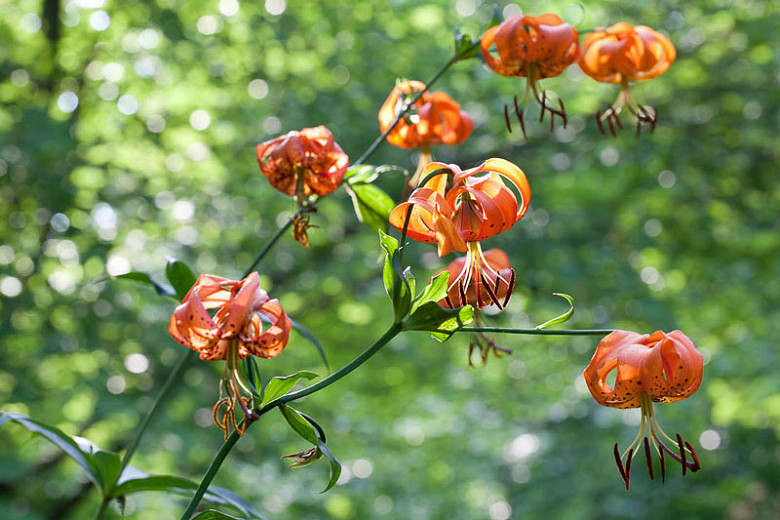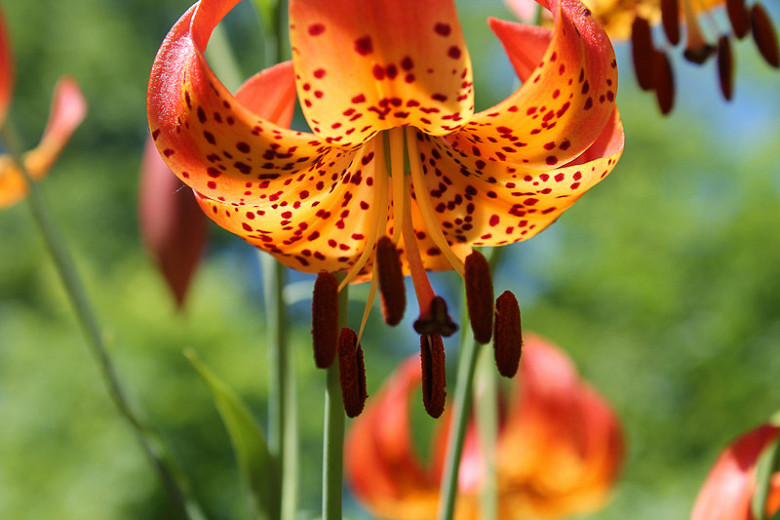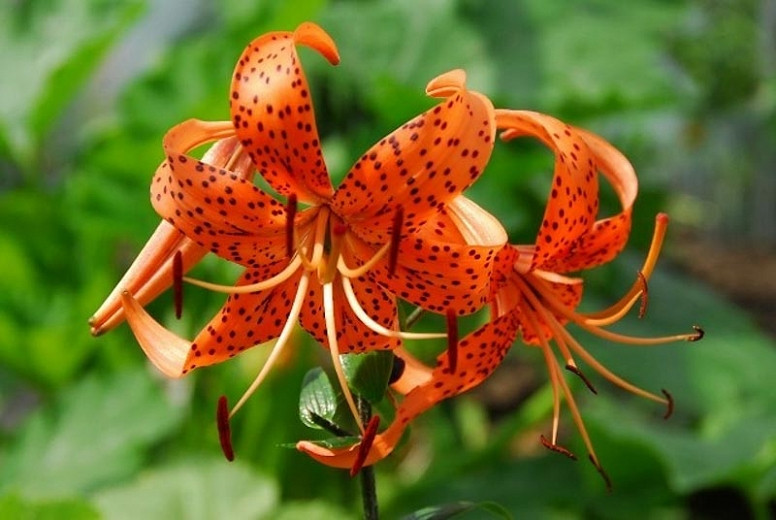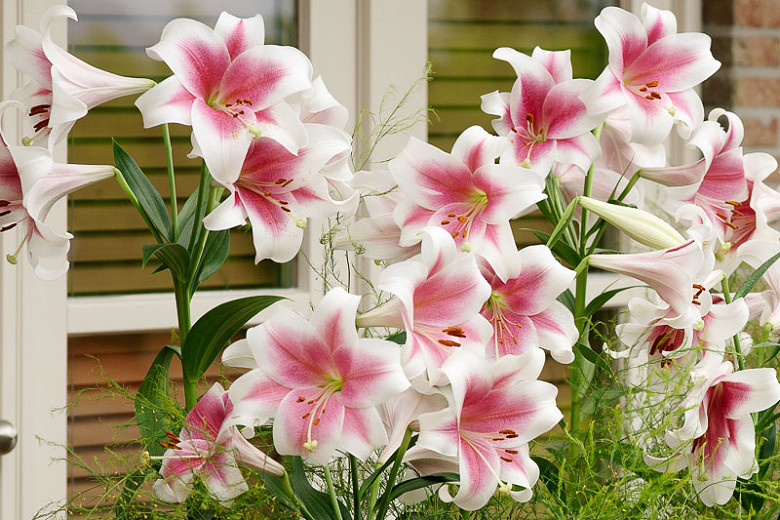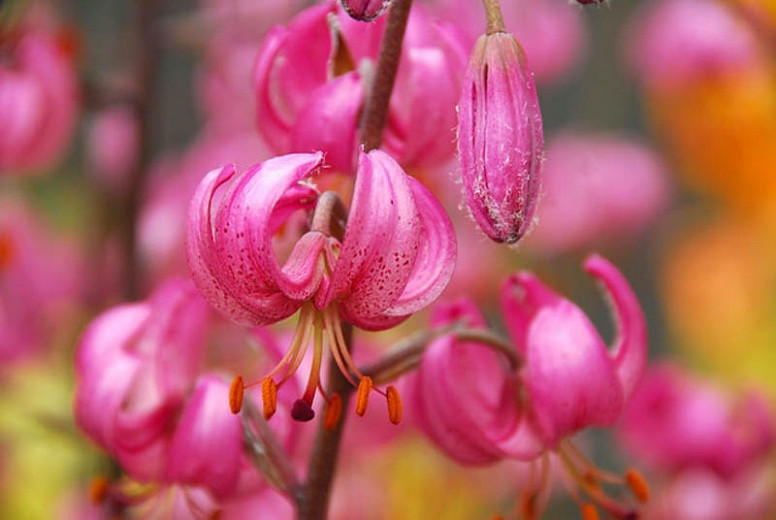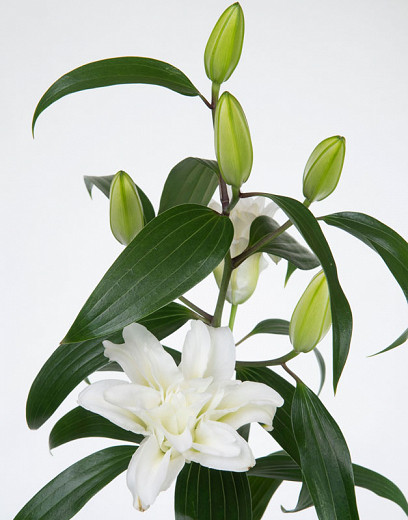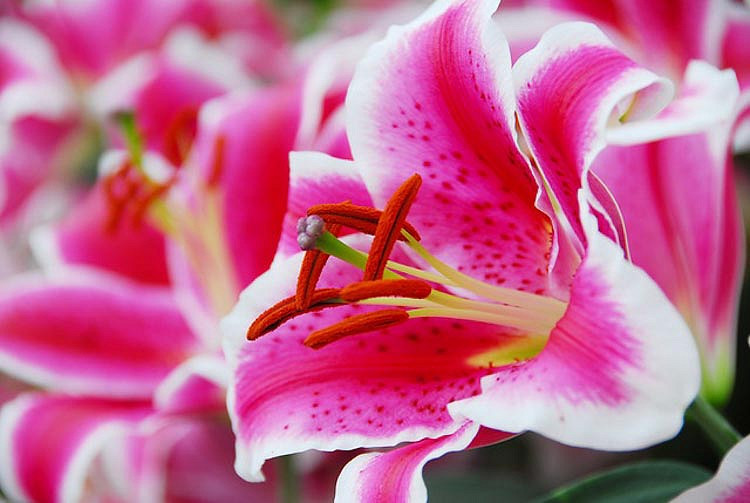Lilium superbum (Lily)
Vigorous, Lilium superbum is a fascinating beauty that can form considerable colonies in the wild, with plenty of stems loaded with profuse blooms.
Vigorous, Lilium superbum is a fascinating beauty that can form considerable colonies in the wild, with plenty of stems loaded with profuse blooms. Born in clusters on erect stems clad with lance-shaped leaves arranged in whorls, the tangerine nodding flowers, up to 4 in. across (10 cm), are downward-facing, with a generous sprinkling of maroon freckles and strongly reflexed petals giving them the look of a Turk's cap (hence the common name). A magnificent flowering bulb for the shade garden, Lilium superbum is the largest and most spectacular of the native American lilies with up to 40 flowers on a single plant.
- Blooming in early to mid-summer, this lily comes back year after year and provides striking color and contrast to borders, cottage gardens, prairies or meadows, near ponds and streams. Best grouped or massed.
- Growing up to 6-9 feet tall (180-270 cm) on slender stems clad with whorled leaves, it is highly disease-resistant. Bulbs are strongly stoloniferous and this plant may spread to form an impressive colony if settled and happy. If grown in optimum conditions, it can have plenty of stems reaching up to 9 ft. high (270 cm).
- Performs best in full sun or part shade, in rich, medium to wet, well-drained soils. Good moisture is required and dry soils should be avoided.
- When flowering, this lily is highly attractive to butterflies and hummingbirds, which are frequent visitors in search of the nectar it provides.
- Plant 5-6 in. deep (12-15 cm) in fall.
- Toxic to cats (though not for dogs or any known species).
- This Lily is a member of the Species and cultivars of species Division (IX) which includes all species and their subspecies, varieties, forms, and cultivars selected therefrom (excluding those derived from formosanum, longiflorum, philippinense, and wallichianum). There are 9 different types of lilies classified by the Royal Horticultural Society. And they are all real eye-catchers!
- Native to southern New Hampshire, Massachusetts, and New York; south to Georgia and Alabama.
Requirements
| Hardiness | 4 – 7 |
|---|---|
| Heat Zones | 1 – 8 |
| Climate Zones | 3, 4, 5, 6, 7, 8, 9, 14, 15, 16, 17, 18, 19, 20, 21, 22, 23, 24 |
| Plant Type | Bulbs, Perennials |
| Plant Family | Lilium – Lilies |
| Exposure | Full Sun, Partial Sun |
| Season of Interest | Summer (Early,Mid) |
| Height | 6' – 9' (180cm – 270cm) |
| Spread | 6" – 9" (15cm – 22cm) |
| Spacing | 7″ (17cm) |
| Depth | 5" – 6" (12cm – 15cm) |
| Water Needs | Average, High |
| Maintenance | Low |
| Soil Type | Loam, Sand |
| Soil pH | Acid, Neutral |
| Soil Drainage | Moist but Well-Drained |
| Characteristics | Showy |
| Native Plants | United States, Midwest, Illinois, Indiana, Minnesota, Ohio, Northeast, Connecticut, Delaware, Massachusetts, Maryland, New Hampshire, New Jersey, New York, Pennsylvania, Rhode Island, Southeast, Alabama, Arkansas, Florida, Georgia, Kentucky, Mississippi, North Carolina, Tennessee, Virginia, West Virginia |
| Tolerance | Wet Soil |
| Attracts | Bees, Butterflies, Hummingbirds |
| Garden Uses | Beds and Borders, Ponds and Streams, Rain Gardens |
| Garden Styles | Informal and Cottage, Prairie and Meadow, Traditional Garden |
